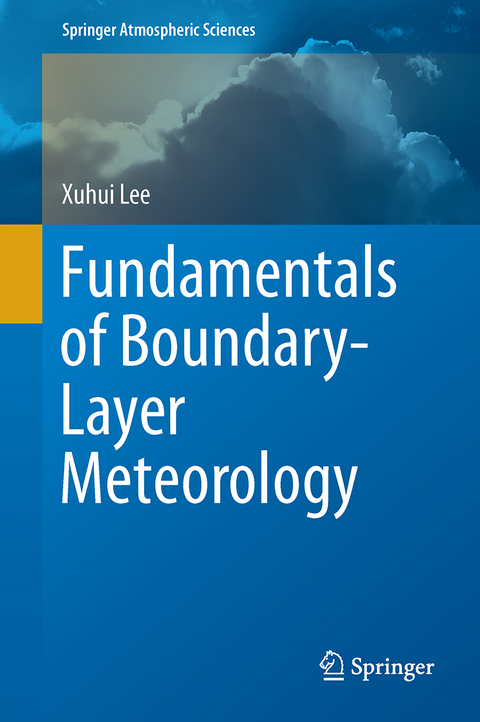
Fundamentals of Boundary-Layer Meteorology
Springer International Publishing (Verlag)
978-3-319-60851-8 (ISBN)
- Titel erscheint in neuer Auflage
- Artikel merken
Professor Lee is Sara Shallenberger Brown Professor of Meteorology at Yale University, USA. His research and teaching concern the interactions between the terrestrial biosphere, the atmosphere and anthropogenic drivers. His areas of interest include boundary-layer meteorology, air pollution meteorology, meteorological instrumentation, remote sensing, and carbon cycle science. One focus of his research is on greenhouse gas fluxes in the terrestrial environment, including forests, cropland and lakes. Other ongoing projects deal with isotopic tracers in the cycling of carbon dioxide and water vapor and biogeochemical and biophysical effects of land use on the climate system. He is recipient of the 2015 Award for Outstanding Achievement in Biometeorology from the American Meteorological Society and currently serves as editor-in-chief for the international journal Agricultural and Forest Meteorology.
Introduction to micrometeorology.- Fundamental equations.- Governing equations for mean quantities.- Forces in balance and structures of the lower atmosphere.- Generation and maintenance of atmospheric turbulence.- Tracer transport in the canopy and in the surface layer.- Principles of eddy covariance.- Radiation balance and energy balance.- Density effects. - Budgets of trace gases in the atmospheric boundary layer.
| Erscheinungsdatum | 09.09.2017 |
|---|---|
| Reihe/Serie | Springer Atmospheric Sciences |
| Zusatzinfo | IX, 256 p. 110 illus., 1 illus. in color. |
| Verlagsort | Cham |
| Sprache | englisch |
| Maße | 155 x 235 mm |
| Gewicht | 525 g |
| Themenwelt | Naturwissenschaften ► Biologie ► Ökologie / Naturschutz |
| Naturwissenschaften ► Geowissenschaften ► Geologie | |
| Naturwissenschaften ► Geowissenschaften ► Meteorologie / Klimatologie | |
| Schlagworte | atmospheric sciences • Biophysical Processes • Boundary Layer Meteorology • climatology • Earth and Environmental Science • earth sciences • Ecological science, the Biosphere • Ecosystem Metabolism • Energy Transport and Turbulence • meteorology • meteorology & climatology • Meteorology & climatology • Micrometeorology • Terrestial Ecology |
| ISBN-10 | 3-319-60851-7 / 3319608517 |
| ISBN-13 | 978-3-319-60851-8 / 9783319608518 |
| Zustand | Neuware |
| Haben Sie eine Frage zum Produkt? |
aus dem Bereich



